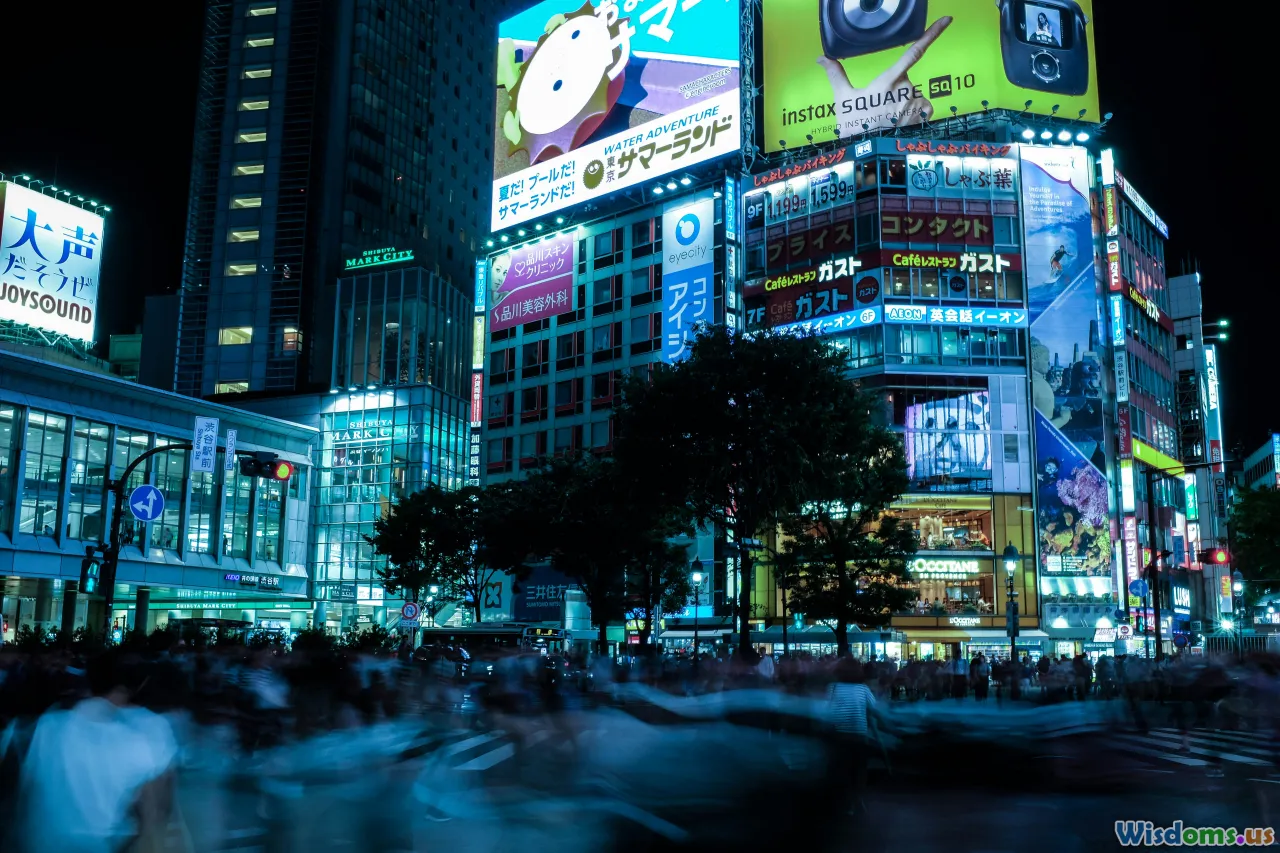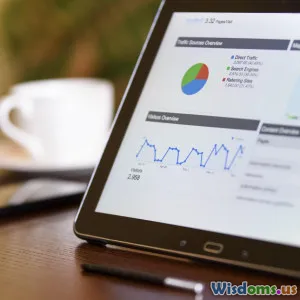
Step By Step Creating Ads For High Growing Campaigns
14 min read A detailed guide to designing ads for campaigns primed for rapid growth and high conversion rates. (0 Reviews)
Step By Step Creating Ads For High Growing Campaigns
Driving impressive growth through digital advertising is far from accidental. The most effective campaigns blend art, science, and proven strategic frameworks. Brands like Nike, Airbnb, and fast-scaling D2C startups demonstrate that building high-growth campaigns hinges on rigorous planning, continuous testing, and data-driven creativity. Below, we’ll break down the crucial steps to craft ads that don’t just get noticed—they convert, scale, and build lasting momentum.
Laying the Foundation: Research and Targeting

Every high-growth ad campaign starts before the first headline is written. Deep research ensures your message reaches the right eyes—and addresses their real motivations.
Action Steps:
- Define Your Objective: Are you aiming for awareness, acquisition, downloads, purchases, or retention? Shopify, for instance, targets signups for its e-commerce platform, while Netflix may focus on subscriptions.
- Dive Into Audience Insights:
- Demographics: Age, gender, location, income.
- Psychographics: Interests, hobbies, values. Tools like Facebook Audience Insights can mine this data.
- Example: Glossier scaled by understanding the beauty habits and aspirations of millennial women through Instagram polls.
- Study Competitors: Analyze rival ads using platforms like Facebook Ad Library or SEMrush. Note patterns—do most competitors use testimonials or influencer partnerships?
- Identify Channels: Where does your audience genuinely spend time? TikTok for Gen Z, LinkedIn for B2B, YouTube for tutorials.
Pro tip: Make use of buyer personas. For example, a SaaS startup may craft personas such as “Budget-Conscious CTOs” or “Growth-Driven Marketers.” Align your targeting with these archetypes.
Designing Compelling Creative Assets

The most scalable campaigns don’t rely on a single winning ad. Instead, they create variations optimized for each platform’s unique culture and best practices.
Elements to Develop:
- Attention-Grabbing Visuals: Striking images, branded templates, motion graphics. Example: Apple’s minimalist, vibrant iPhone ads cut through with punchy visuals.
- Headline & Primary Text: Craft headlines that address pain points or spark curiosity.
- Example: For Headspace meditation app: "Stressed? 10 Minutes Can Change Your Day."
- Call To Action (CTA): Be direct—"Shop Now", "Download Free E-Book", "Book Your Demo".
- Ad Format Optimized for Medium:
- Instagram/Facebook Stories: Vertical videos <15 seconds; use large text overlays and snappy animation.
- LinkedIn: Professional imagery, B2B-centric copy.
- YouTube/CTV: Opening has 5 seconds to hook—use fast-moving visuals and strong introduction.
Practical Example:
When Warby Parker entered new markets, they A/B tested lifestyle shots versus product-only images. Lifestyle ads saw 35% higher engagement, showing the value of real-world context.
Crafting Messaging That Converts

Your message must resonate in a split-second. Use proven frameworks:
- AIDA Formula: Attention, Interest, Desire, Action.
- Example: Grammarly’s YouTube pre-roll ads start with a problem (“Tired of embarrassing emails?”), present a solution, evoke desire (polished writing), and command action (“Install free now!”).
- Social Proof: Mention reviews, awards, or user numbers. “Trusted by over 1 million customers.”
- Scarcity and Urgency: “Last day to save 30%” or “Only 12 spots left.”
- Custom Tailored to Funnel Stage:
- Awareness: Focus on problem/brand story.
- Consideration: Emphasize features/benefits.
- Conversion: Strong CTA, guaranteed offer.
Tip: Speak the customer’s language, not company jargon. Dollar Shave Club’s disruptive launch video used humor and direct language—resulting in 12,000 orders within the first 48 hours.
Establishing Conversion-Optimized Landing Pages

It’s a fatal mistake to send paid clicks to your home page. High-growth campaigns use tailored, conversion-focused landing pages for each audience segment and traffic source.
Best Practices:
- Consistency: Match ad messaging with landing page headlines and visuals—reduces bounce.
- Minimal Distractions: No unnecessary navigation; singular CTA above-the-fold.
- Speed Matters: 1-in-4 visitors abandon sites that take over four seconds to load. Use Google PageSpeed Insights to test.
- Trust Signals: Display security badges, user testimonials, social counters (e.g., “5,000+ happy customers”).
- Mobile Optimization: In 2023, mobile accounted for over 60% of global website traffic (Statista)—test thoroughly on all devices.
Example:
Airbnb’s vacation rental ads direct to property-specific pages featuring large visuals, immediate availability check, and host ratings — accelerating booking rates.
Testing Creatives With Smart Experimentation

No high-growth ad campaign is ever a one-shot success. The best marketers systematically test creative assets and targeting options using disciplined experimentation.
Actionable Steps:
- A/B Testing: Change one variable at a time (headline, image, CTA).
- Example: Duolingo tested "Learn Languages Free" versus "Master Spanish in 10 Minutes" as ad headlines. The latter improved conversions by 23% in Spanish-speaking markets.
- Multivariate Testing: Test combinations for deeper insight but monitor costs (requires larger budgets).
- Rotate Variations: Limit creative fatigue by swapping assets; Facebook suggests 5+ variations per ad set.
- Measure Micro-Conversions: Not just purchases—track clicks, video completions, sign-ups.
- Analytics Deep Dive: Use Facebook Ads Manager, Google Analytics, or BI tools to monitor:
- Cost per acquisition (CPA)
- Click-thru rate (CTR)
- Return on ad spend (ROAS)
- Funnel drop-off rates
Pro Insight:
High-growth DTC brands like Allbirds have an in-house testing cadence, launching new creative iterations biweekly for continuous uplift.
Scaling Up: Automation & Budget Optimization

Once you’ve honed winning elements, shift to scaling—without sacrificing efficiency.
Top Strategies:
- Automated Rules: Platforms like Facebook Ads allow you to set rules ("Increase budget by 20% if CPA < $25").
- Lookalike Audiences: Analyze best-converting customers, and let algorithms find similar users.
- Case: Spotify used lookalike modeling in North America, accelerating paid subscribers by targeting music-loving micro-segments.
- Incremental Budget Tests: Increase budgets in testable increments—watch for "diminishing returns" as you broaden reach.
- Dynamic Creative Optimization (DCO): Let AI auto-generate combinations of headlines, visuals, and calls to action, showing each user the highest-probability variation.
- Cross-Channel Attribution: Use UTM tagging and analytics integrations to pinpoint which channels deliver the strongest ROI.
Example:
Glossier realized Instagram Stories yielded a 2x higher ROAS versus Facebook Feed as budgets scaled. They systematized investment based on analytics, not gut intuition.
Advanced Tracking, Reporting, and Learning Loops
Granular measurement is the backbone of sustainable, data-driven growth. Here’s how high performers approach analytics:
- End-to-End Tracking: Install Facebook Pixel, Google Analytics, TikTok Pixel—track every user’s journey from ad to checkout.
- Event-Based Conversion Tracking: Register every key action (video views, purchase, add to cart), not just landing page visits.
- Visual Dashboards: Use Google Data Studio or Tableau to visualize KPIs like CPA, ROI, LTV, and retention rates.
- Weekly Learning Sprints: Hold team reviews to discuss learnings, creative fatigue, new hypotheses, and failed experiments. Adopt a true "test-learn-iterate" mindset.
- Campaign Heatmaps: Highlight strong and weak performers—focus investment on what’s scaling profitably.
Example:
eBay’s marketing teams operate a "decision science" group that runs over 50 in-market experiments monthly, rigorously learning and implementing insights.
Adapting to Platform Trends and Algorithm Changes

Digital advertising never stands still — platform algorithms evolve, and new formats (like TikTok Spark Ads) quickly gain traction. Loyalty to last year’s tactics risks future stagnation.
Smart Approaches:
- Stay Plugged In: Follow updates from Facebook Business, Google Ads Blog, TikTok For Business for the latest features and restrictions.
- Embrace New Formats: Early adoption often drives outsized returns before competition intensifies.
- Example: Brands riding TikTok’s “TopView” video format in 2022 reached millions with lightweight budgets versus saturated Instagram stories.
- Pause Underperforming Channels: Rapidly reallocate budget to outperformers as algorithms shift.
- Leverage Influencer and UGC Trends: Platforms amplify UGC over branded content. Experiment with creator partnerships for authentic feel—see how Gymshark scaled sales via micro-influencer teams on Instagram.
Key Insight:
When Apple’s iOS 14 privacy changes hit, many e-commerce advertisers shifted to server-side tracking and doubled down on email acquisition—a testament to agility.
Sustaining Growth: Creative Refreshes and Brand Cohesion

High-growth isn’t a single campaign; it’s a cycle of creative rejuvenation and strategic reinforcement.
- Periodic Creative Refresh: Replace, not just tweak—introduce new visuals, taglines, and even formats each quarter.
- Maintain Brand Cohesion: Your campaigns can scale only if all creative assets echo a unified tone, color scheme, messaging architecture. Use brand guidelines and templates for consistency.
- Involve Cross-Functional Teams: Pull insights from sales, customer support, and product teams to keep messaging tied to current customer pulse.
- Build Feedback Loops: Solicit feedback from customers with surveys post-campaign—Uber Eats ran A/B tests on ad taglines, then refined based on customer feedback.
Example:
Calendly’s exponential growth is partially attributed to quarterly brand audits of its ad creative, aligning every asset from awareness to retention around their “simplicity in scheduling” mantra.
When matchless creative meets precise targeting, frequent iteration, and tireless analysis, even modest ad budgets can unlock vivid and scalable results. Each campaign is a living experiment—fuel it with curiosity and discipline, and your high-growth potential knows no bounds.
Rate the Post
User Reviews
Popular Posts
















